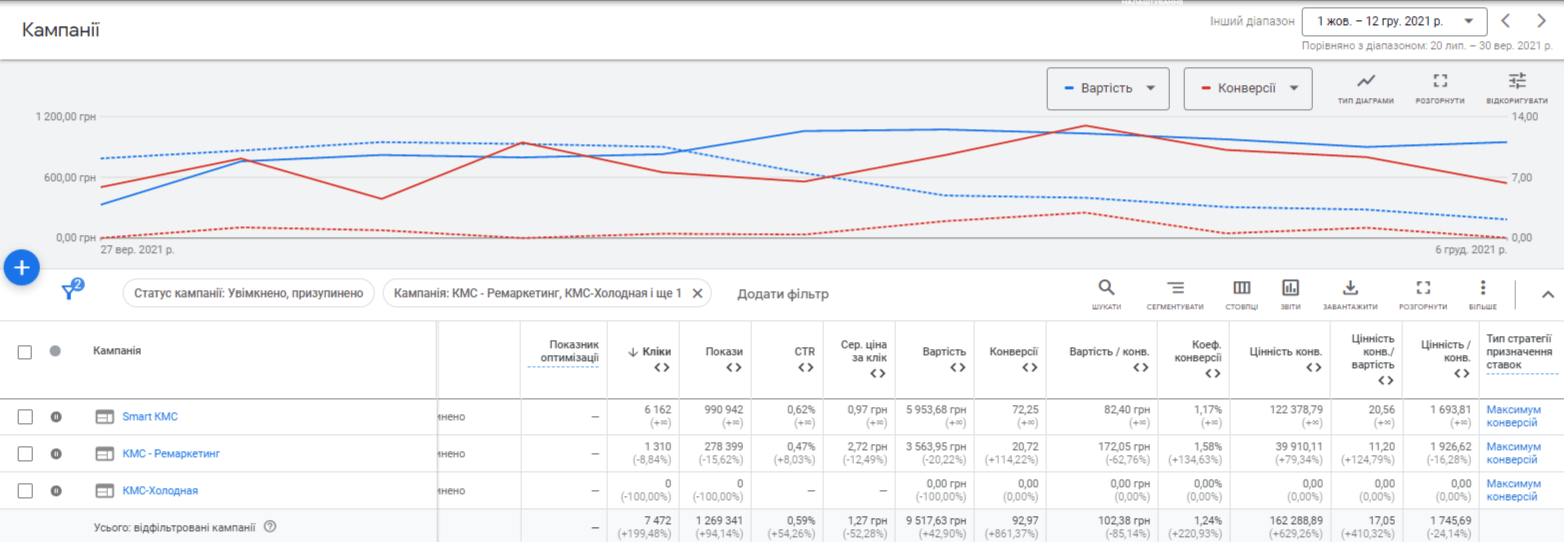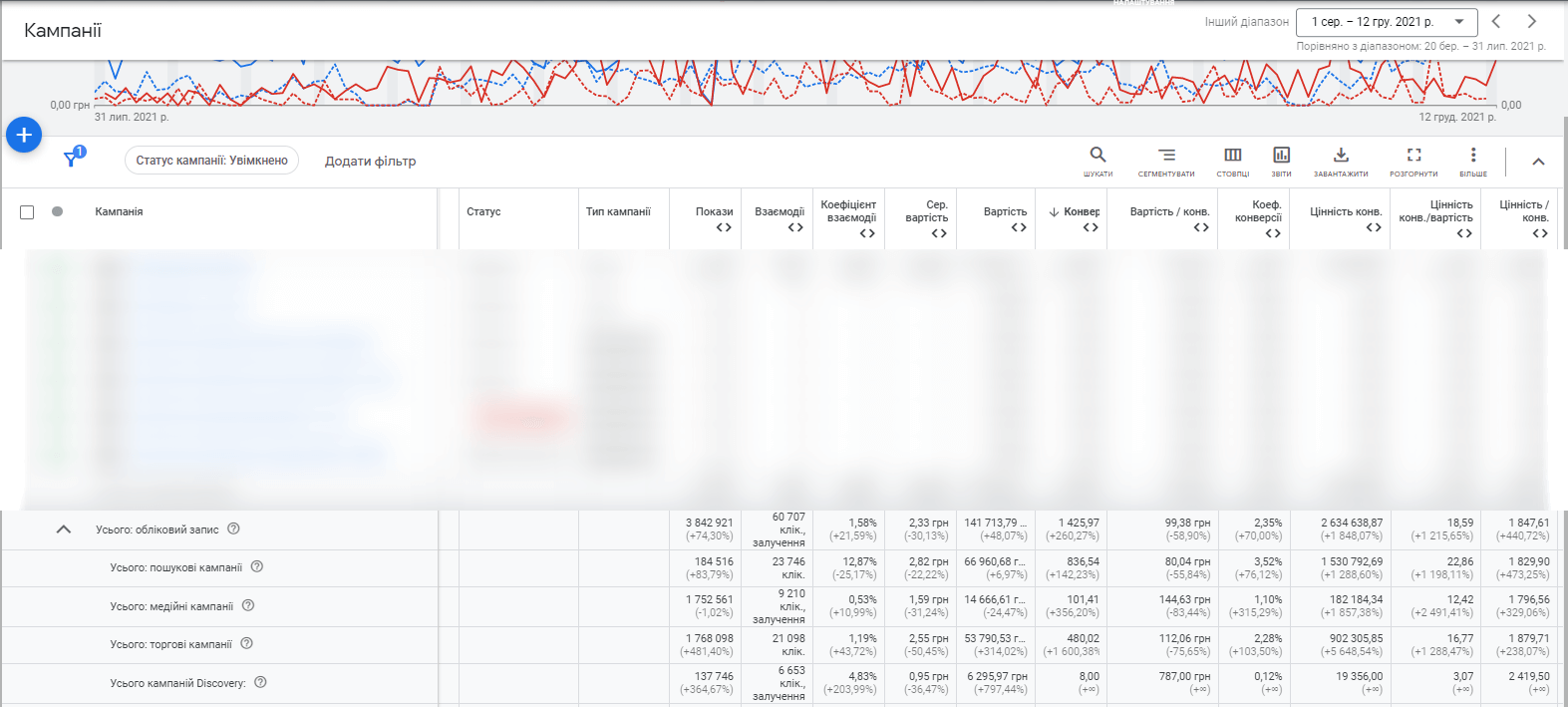Client
Multi-brand premium men’s clothing online store, the exclusive representative of all brands presented on the site.
Work period
Our team actively worked on the project from 30/10/2020 to 12/12/2022.
Our goal
To increase the number of transactions.
Preamble
The peculiarity of the project is in its price segment: above-average, premium men’s clothing. In view of this, the approach to setting up advertising was different from that of an ordinary online store.
In the search network, high-frequency commercial keywords would have led to budget clicking, and the audience for ads in the contextual media network required detailed study to minimize the display of ads to an untargeted audience.
Search advertising campaigns
In the search network, we set up the following ad campaigns:
- advertising campaigns by product category;
- brand advertising campaigns;
- advertising campaigns with dynamic search ads to cover relevant low-frequency search requests.
To avoid non-targeted audience clicks, we added “From…” prices to the ads and worked out the semantics of the ad campaigns in detail by product category, focusing on keywords targeting premium clothing.
In the middle of September 2021, we changed the structure of advertising campaigns from SKAG (Single Keyword Adgroup) to STAG (Single Theme Adgroup) in order to:
- increase the statistics collected by ad groups and improve the effectiveness of automated bid strategies to increase conversions;
- the ability to test keywords in a broad match type to reduce the cost of conversions.
SKAG type grouping (1 group — 1 key) was previously used to achieve maximum ad relevance to the keyword through its inclusion in the ad text. When using the SKAG structure, the total traffic for an ad campaign was too fragmented because of a large number of groups. When grouping by STAG type (1 group — 1 topic), we slightly lose in the relevance of ads to the search request, but we gain through the collection of more statistics by groups of ads and more effective training of automatic strategies, and can use the keys in a broad match type. Google has improved this match type, and now broad match type keywords work effectively in conjunction with smart bidding (taking into account other keywords in the group, landing page, user location, and other signals).
The screenshot below shows the date the ad campaign structure was changed. After that, the number of conversions almost doubled at the same rate.
1. Advertising campaign by clothing category
At the beginning of November, after gathering enough statistics since the account structure change, we added keywords in the broad match type to the clothing category ad campaign. When comparing to the previous, similar in the number of days, the CTR and average click price decreased significantly after keywords in the broad match type were added. But there was a 112.36% increase in conversions, a 43.96% decrease in cost, and a 234.89% increase in value.
As a result, keywords in the broad match type got more than half of all conversions on the ad campaign at a lower cost.
2. Brand advertising campaign
When changing the account structure, our experts combined all brand campaigns into one. To increase the number of conversions and their value, we decided to test the bidding strategy “Maximize conversion value” in the brand advertising campaign.
The screenshot shows the period of structure and strategy of the bidding setting change.
The result: ROAS increased by 59.69% and the number of conversions more than doubled at a cost reduction of 39.51%.
Contextual media network
Initially, there were two campaigns running in the contextual media network: a remarketing campaign and a cold audience advertising campaign. The latter showed low efficiency, and the cost of conversion was several times higher than the average for the account.
To increase the number of conversions and reduce their cost, our experts decided to launch a smart campaign on the contextual media network to replace the ineffective ad campaign.
Smart campaigns in the contextual media network use smart bidding, automatic targeting, take into account the landing page and own data segments (previously — remarketing audiences). Adaptive and product-specific media ads are shown in such campaigns.
The screenshot shows the launch period of the smart campaign in the contextual media network.
As a result of running a smart campaign in the contextual media network, we were able to increase the number of conversions by more than 8 times and reduce the average cost per conversion by 85.14%, while their value increased by 629.26%.
Shopping campaigns
Shopping campaigns are the most important and efficient type of advertising campaign for an online store. Therefore, after preparing the feed and setting up the merchant center, we first launched a basic shopping campaign to collect statistics, and after a while — a smart campaign.
*Further we planned to switch from a smart shopping campaign to a Performance Max ad campaign because of the higher efficiency of this tool.
One of the advantages of smart shopping campaigns is that they use smart bidding strategies to increase conversion value, whereas the regular ones use only manual.
As a result of the smart shopping campaign, we achieved a 75.65% reduction in conversion cost and a 103.5% increase in conversion rate, while increasing ROAS by more than 13 times.
Results
As a result of optimizing our search advertising campaigns and launching smart campaigns, we managed to increase the total number of macro-conversions (Transactions, Binotel Call Requests, and Click-to-Call) by 260.27%, reducing their cost by 58.9%. At the same time, we increased the number of transactions by 451.59%, and their value — by more than 3 times, while their cost increased by only 48%.









